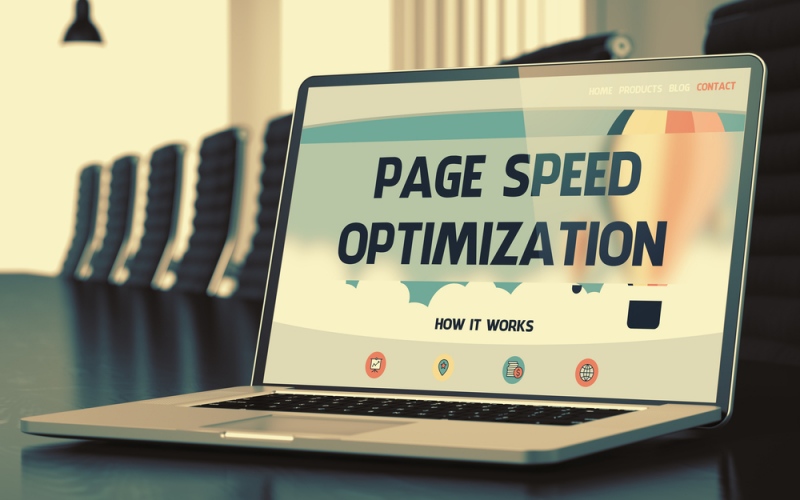Web design is not just a beautiful view of your site and convenient content location. It is the way to promote your business and create a positive image of your company. That’s why any developer should remember about three components of successful web design: optimization, analysis and loading speed. Let us for the sake of clarity elaborate further on these three parameters and pay special attention to the third one.
OPTIMIZE YOUR WEBSITE
Internet is not static, it is being constantly developed. Google search, as well as Yahoo, Bing and other ones, have recently changed their search engine protocols. Now the systems are watching the users’ behaviour in order to choose the best way of showing the search results. That’s why it is so important to pay attention to web design following the trend as it will help to optimize your website and increase its ranking.
- Site code clearness (styles description in .css file, lack of embed code and obsolete structures);
- Lack of modules hiding content from visitors (for instance, pop-up banners bring your website to lower positions in search results);
- Quality content in order to make users stay longer on the page;
- Responsive web design (for mobile devices);
- Website speed optimization.
INSTALL GOOGLE ANALYTICS
As you might guess your website will not be ranked higher in search engine results without considering behavioral parameters by Google. Please note that Google will not take into account users’ behaviour while you will not install Google Analytics service on your site. Today, it is the best and most popular website check service on the Internet. Google Analytics has a number of useful options. Its installation is the first thing you should do.
Direct Line Development wants to warn you that after installation of the service your site will lost its positions in search delivery. But don’t worry, it’s temporary. The counter needs time to gather all the information on various indicators. As a rule, it takes not much time. As soon as the job is done your site will go higher.
INCREASE WEBSITE SPEED
One of the most important things about web design is site loading speed. If your site is as slow as a snail, nobody will like it. Direct Line Development can confidently say that if the page is loading slowly, it will push your clients away. So as to back up this reaffirmation with supporting evidence, we refer to the Kissmetrics survey. Thus, it has been proven that if it takes the page more than three seconds to be loaded, 40% of users will leave it.
If our recommendations on optimization and analysis of your web design are followed, not much remains to be done. All you have to do is to ask your web developer to make a speed check and reduce page load times accordingly. But how to achieve it? Here are seventeen web design steps to increase your website speed:
- First and foremost, you should use Google Pagespeed Insights tool to check download speed. Just open the page and enter your website URL. This online speed test service will analyze and evaluate your web design optimization and speed for both desktop computers and mobile devices and give you suggestions on how to fix special problems within the web design. Please follow these suggestions. Other similar tools are: Pingdom, Yahoo! YSlow, WebPageTest, LoadImpact, and LoadStorm.
- Please note that large images significantly increase downloading time. That’s why you have to use images fitted by size and do not store pictures in PNG format, but in JPG. We will take a high-quality image as an example. If it is 1000×1000 pixels, and only 100×100 is shown, it will take 10 times more to load than necessary. It is disrespecting the users who have to spend their time waiting for the page to be loaded.
- Use CDN server (Content Delivery Network). It is good especially for those who have a fair amount of traffic. Direct Line Developers, an experienced web design firm, recommends such servers as MaxCDN, CacheFly, Cloudflare, and Inscapsula. They are useful and rather convenient.
- Enable caching. This can be done by sending some requests to CDN servers with static content. The point is that it is duplicated in accordance with the user’s location.
- Simplify the code (CSS, HTML, JS) by moving spaces and line breaks out. If they are presented in the code it may take the page longer to load.
- All duplicated files should be merged: images like icons and user interface pictures should be stored in a single sprite. The same is with JS and CSS files – merge them into one document.
- CSS files should be located on the top of the page in order to render the page gradually. Proper CSS files location is a good influence on download speed.
- Javascript in contrast to CSS should be stored at the foot of the page. This will allow the page not to stop while loading.
- Please note that different subdomains should be used for static files. Advanced browsers are able to load the data in parallel. We would like to mention that there is a restriction from 1 to 8 resources loaded at one and the same time for one source. So, create subdomains, locate the same static files there and specify several subdomains in the code. It is a good way to make resources load quick.
- Use your browser’s cache. This is a server parameter that tells the user’s browser how long a specific file received from the server will be actual. For instance, the server is sending the client a style.css file that will be actual for 10 days only. This means that the user’s browser is aware of uselessness to send a query to the server in the following 10 days. As a result the loading website speed will be improved.
- It is necessary to compress the queries to increase the loading site speed. That is why, when you send large data pieces to the server, use Gzip compression. Just enable this option in your server functions. All up-to-date browsers have built-in decompressors.
- Start using a fast web host. Hosts differ. Low-budget hosts like Hostgator, BlueHost and GoDaddy slow down the site performance, as they do not cope with a fair amount of traffic. It’s better to try Hetzner, SingleHoop, Storm on Demand, WP Engine or LiquidWeb.
- Switch unnecessary plugins off. If your site has plugins which you do not use, switch them off. They slow down the website speed very much, as they require loading lots of extra javascript and css files. If you do not know if there are any useless plugins, perform a plugin audit.
- Use external thirty-party platforms in your web design. For example, you want there will be some videos on your site. If you upload these videos right to the server, it will take time to load the page. But if you use YouTube or Vimeo, it will significantly reduce the download speed.
- Use Lazy Loading in the web design. It is a jQuery plugin that allows you to carry out delayed loading of images, which is important for the pages with a large number of images. With this plugin images are loaded as the user scrolls down the page. The best plugins are BJ Lazy Load and WP Rocket.
- Reduce the number of redirects. Redirects are often used to eliminate issues with broken links when some pages are moved or deleted. However, this presented a risk that additional network cycles would be involved, because of which the website loading time may increase, especially if we are talking about mobile devices. Therefore, it is better to reduce the number of redirects or do not use them at all. To check your site for redirects you can use the ScreamingFrog tool.
- Perform speed check on a regular basis. After your work on improving your site speed is done, it’s better to check the speed from time to time. There are lots of reasons why the speed slows down, that’s why it’s so important to monitor the site over time. Moreover, you should check mobile speed as well, because ranking depends not upon a desktop web design only, but a mobile one too.
To sum up, we propose the following: make a website speed test with the help of Google PageSpeed Insights and follow our seventeen recommendations described above. If this information is complicated for you or your web developer can’t keep up with the task, our web design agency Direct Line Development will be pleased to help you to check speed of your site and improve its performance. After our help Google will rank your site in the best possible way.



